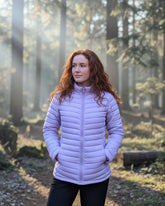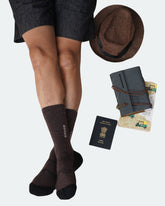Do I Want to Become a Mountaineer? (Part 1)
Do I Want to Become a Mountaineer? (Part 1)
The mountains hide secret trails—paths known only to those who belong to the mountain kingdom. The rest of us, upon entering these tracks, often find ourselves slipping, stumbling, and falling. Yet that was what I was so eager to learn: How do you run down a steep forested slope, climb where there is no path, and cross moraine and scree; in other words, how does one explore the hidden veins of the mountains? Such an impulse led me to register for the Basic Mountaineering Course (BMC).
After sending in the application in December 2016, I was confirmed only in April 2018. In the past five years, outdoor courses have come into vogue, and the waiting period has stretched to 18 to 24 months.
Given that I come from Bombay, I found the whole thought of spending 28 days in the mountains exhilarating. However, those days taught me an important lesson: loving the mountains is different from really wanting to be a mountaineer. Here's what I went through.
First Impressions
After arriving at the institute, we went through all the necessary formalities, including meeting with the Quarter Master. To me, this felt reminiscent of the 1960s. In this meeting, we were each given our first session’s item—a mess tin, an aluminum spoon, bed cover, frame cover, quilt cover and cover all of which would become integral parts of our life.
First, we were put through a fitness session. A fitness class that started with a 6 am warm up. A mess 6 am warm up consisting of 75-90 minutes of intense exercise including cardio in the form of run of 3-5 kn, a full body workout. In this case full body workout meant a head to toe workout consisting of burpees, pushups, squats, crunches, burpees frog walks, and breathing. Initially, uncomfortable and straight up painful, the exercises became a part of my life and improved my quality of life.
The view, exercise, and sligh changes to my body were all extremely motivating and in conjunction made the whole experience a highlight of my life rather than a dreadful task.
Acquiring Knowledge of the Ropes
We learned about ropes and knots, the mountaineer's lifeline, the first morning after training and breakfast. Over the course of 28 days, we learned how ropes are used for rescue, how they secure individuals and teams, and how various knots benefit anchors, middle trekkers, and leaders.
The inventiveness of it all captivated me. Who came up with these knots first? The bowline on the bight, which involved a single pull to undo the knot after a careful tuck and another twist, was my favorite. It was similar to summoning magic from a rope.

Rain-ready and cozy inside, this coral jacket features a fleece lining for breathable warmth in damp conditions.
We had an icebreaker that afternoon. Since most workplaces wouldn't allow a month's leave, over half of the batch had quit their jobs to follow this passion. Their dedication was admirable.
Climbing rocks and rappelling
The following four days were devoted to rappelling and rock climbing. I was mistaken to believe that arm strength was crucial for climbing. More important was technique: always look for footholds with the same level of care as handholds; step first, then pull.
The art of belaying, or how the belayer controls the rope to guarantee the climber's safety, was another thing we studied. Lessons in the use of necessary equipment, such as descenders, helmets, carabiners, and harnesses, were also included.
Another revelation was Rappelling. We experimented with sideways rappelling, the Spiderman style (looking straight down), the classic style, and even maneuvers over chimneys and overhangs. Both fear control and rope trust were put to the test in each style.

This tan puffer jacket packs down small without compromising warmth, perfect for adventures on the go.
The 8 a.m. to 1 p.m. morning sessions were very demanding. Lectures on the Himalayas, mountain jargon, first aid, CPR, dangers, avalanches, and proper attire took place in the softer afternoons.
One of the highlights was a biodiversity session held at the zoo adjacent to HMI. I discovered that the Northeast region of India is home to almost half of all flowering plants, making it known as the "cradle of flowering plants."
The talk on clouds and weather forecasting was another noteworthy one. Clouds come in a variety of shapes, sizes, and textures, including cauliflower domes, cotton tufts, and thin veils. Some promise rain or snow, while others promise shade. I took note of this for my upcoming mountain trip: for city people like me, studying clouds is one of the best ways to develop patience and presence.
The next day was a 26-kilometer trek to Tiger Hill. Heavy backpacks were carried to help prepare us for long ascents. At an altitude of 8,400 feet, it is the second-highest point in West Bengal. Clear views of Mt. Everest can be had from here. When all our views were put in a no-show, one of the friends quipped that somebody up on Everest must be smoking hookah.
The entire week began to build anticipation for the very trek to come. Day 7 was a rest day, where people exchanged equipment, purchased marketing essentials, and recharged. I bought a lot of chocolates and a rain cover for my bag.
The very next morning, we left for Yuksom in Sikkim, some 90 km away; that marked the commencement of Stage 2 of the course.

Trekking through the rugged mountains in Kosha’s ski pants—each step bringing me closer to answering, Do I want to be a mountaineer?
And it was right then that Gaurav said something that has stuck with me ever since:
"Mountaineering isn't a course. It has to be a way of life."
And I kept questioning myself: Do I really want to be a mountaineer?"
(To be continued in Part 2)
Quick Facts (Week 1)
-
Showers: Once, before leaving for the trek
-
Clothes:
-
2 sets workout wear + running shoes
-
1 set of climbing clothes (pants + 2 t-shirts)
-
4 sets socks (I alternated 4 pairs over 7 days; Darjeeling’s damp weather makes drying difficult)
-
A night suit
-
Light rain jacket (I used the Kosha Hardshell Breathable Waterproof Jacket)
Yuktie’s Quick Tips for BMC
-
Apply sunblock every 3–4 hours to avoid burns.
-
Practice rope knots daily.
-
Stretch calves, do squats, and practice pranayama to build endurance at altitude.
-
Avoid bottles with metal exteriors—they sap heat from your hands.
-
Carry small daily boosters (I relied on 1 tsp of Chyawanprash + 5 almonds).
This was just the beginning. Ahead lay Sikkim, glaciers, and the question that haunted me through it all: Was I truly cut out to be a mountaineer?
Editor’s Picks
Packable Puffer Jacket For Men
- From ₹3,900.00
₹8,400.00- From ₹3,900.00
- Unit price
- / per
Men's Full Sleeves Thermal | Merino Wool + Bamboo
- ₹4,940.00
₹7,600.00- ₹4,940.00
- Unit price
- / per
Alaskan Parka Jacket For Women - Slim Fit
- ₹8,925.00
₹11,900.00- ₹8,925.00
- Unit price
- / per
Lightweight Packable Puffer Jacket For Women
- ₹5,040.00
₹8,400.00- ₹5,040.00
- Unit price
- / per
Men's Merino Wool Cushioned Technical Socks
- ₹1,074.00
₹1,790.00- ₹1,074.00
- Unit price
- / per













